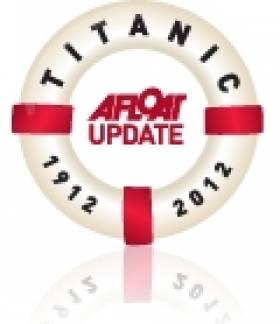Displaying items by tag: Titantic
Will Titanic Really Sail Again?
It is probably only an “eccentric billionaire” who would come up with and finance a plan to build a second Titanic and operate it with a derivative of the name of the company which owned the original ill-fated vessel.
Clive Palmer, the Australian billionaire and Member of Parliament, has been described as such and, though his original intention to have the second Titanic sailing this year has had to be postponed, he is still determined that it will voyage the oceans.
On this edition of THIS ISLAND NATION he and several of his supporters outline why they believe it is a viable project and will sail.

Construction of Titanic II in China
Clive Palmer, is the man who devised the plan for the second TITANIC and is paying for its construction, which will cost at least €200m. He says that TITANIC II will begin its voyages in 2018. Originally the date set for the inaugural sailing by the Blue Star Line, which he established for the project, was during this year. However, there have been difficulties and some setbacks in the project. The first sailing has been deferred for two years, while construction is underway in China.
The name BLUE STAR LINE contrasts with the WHITE STAR LINE which owned the original TITANIC.
BLUE STAR has announced that Titanic II will offer a “true period experience,” including the original type of cramped quarters for Third Class passengers, but better for 2nd and very good for 1st Class, just like the original vessel. It won’t have any ‘sinking feeling,’ according to Mr.Palmer. Unlike the original ship, there will be no shortage of lifeboats and it will have modern maritime safety and navigational, engineering and other technology. It will carry 2,000 passengers and have a lifeboat space for everyone aboard – unlike the original Titanic, which four days into its maiden voyage from Southampton to New York, hit an iceberg in the North Atlantic, about 400 miles from Newfoundland, on the night of 14 April 1912 and, gradually through to the morning of 15 April, sank. There were 2,200 passengers and crew aboard. 1.503 died in the sinking. The ship was built at the Harland and Wolff yard in Belfast.
Southampton has been included as a port-of-call for the inaugural voyage. So far no mention has been made of calling to Cork Harbour, last port-of-call for the ill-fated original vessel, where TITANIC took aboard Irish passengers who joined by tender from Cobh.
Tom MacSweeney
• Listen to THIS ISLAND NATION above
New Cork Film Captures Titanic Commemoration
#titanic – Cork Titanic Society has launched a souvenir film that profiles April's 100th anniversary commemoration of the sinking of RMS 'Titanic'.
The film is produced by Catherine M Courtney and it captures the special wreath laying ceremony on board the Irish Naval vessel, LÉ 'Eithne' on the spot where RMS 'Titanic' anchored off Cork Harbour before embarking on her maiden voyage to New York City on April 11th 1912.
Copies of the film are available in the Cork City Music Library, Grand Parade, Cork.





























































